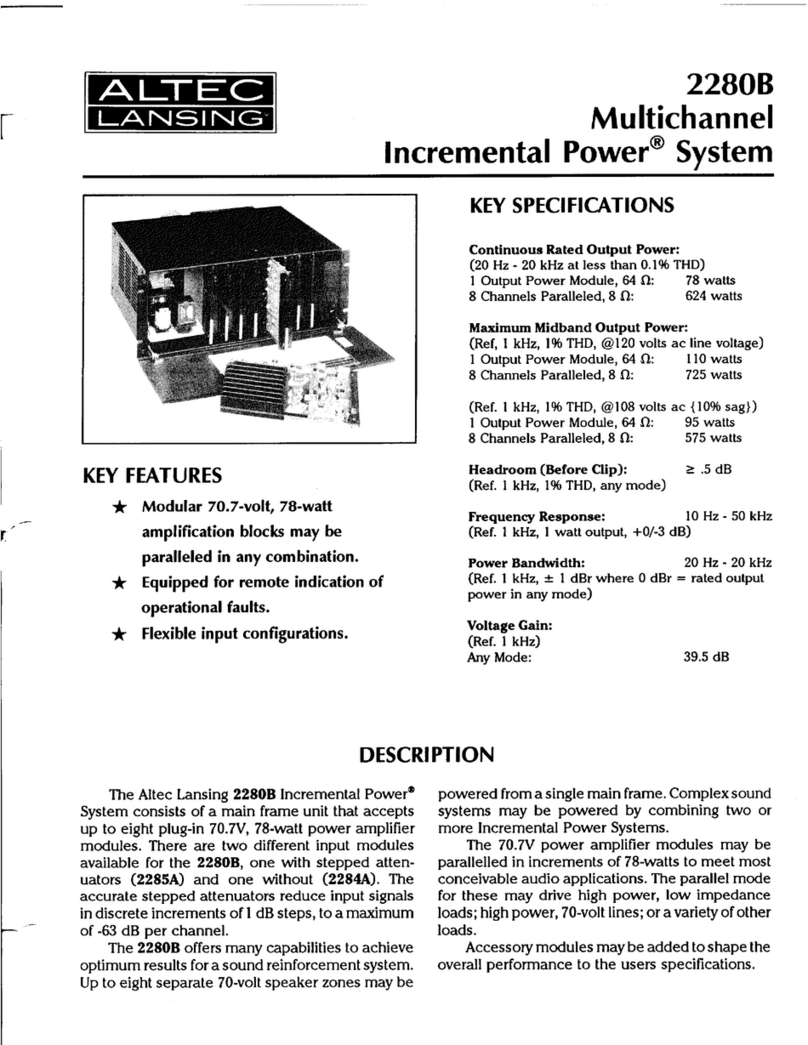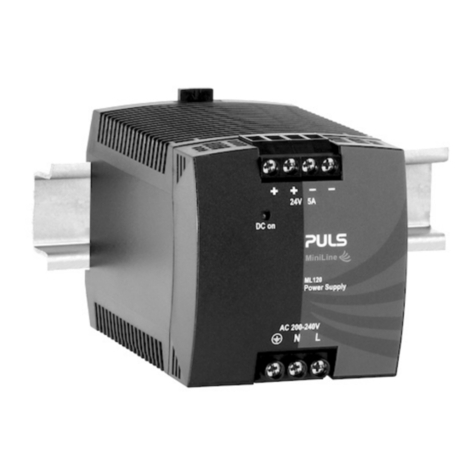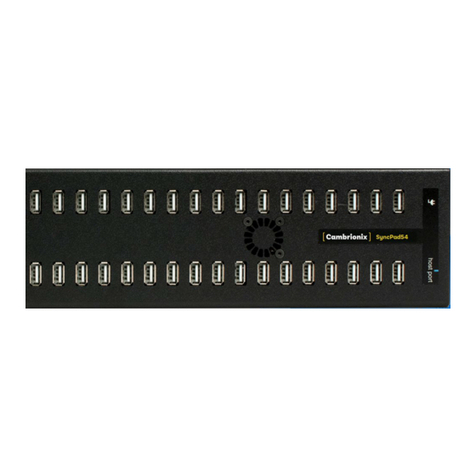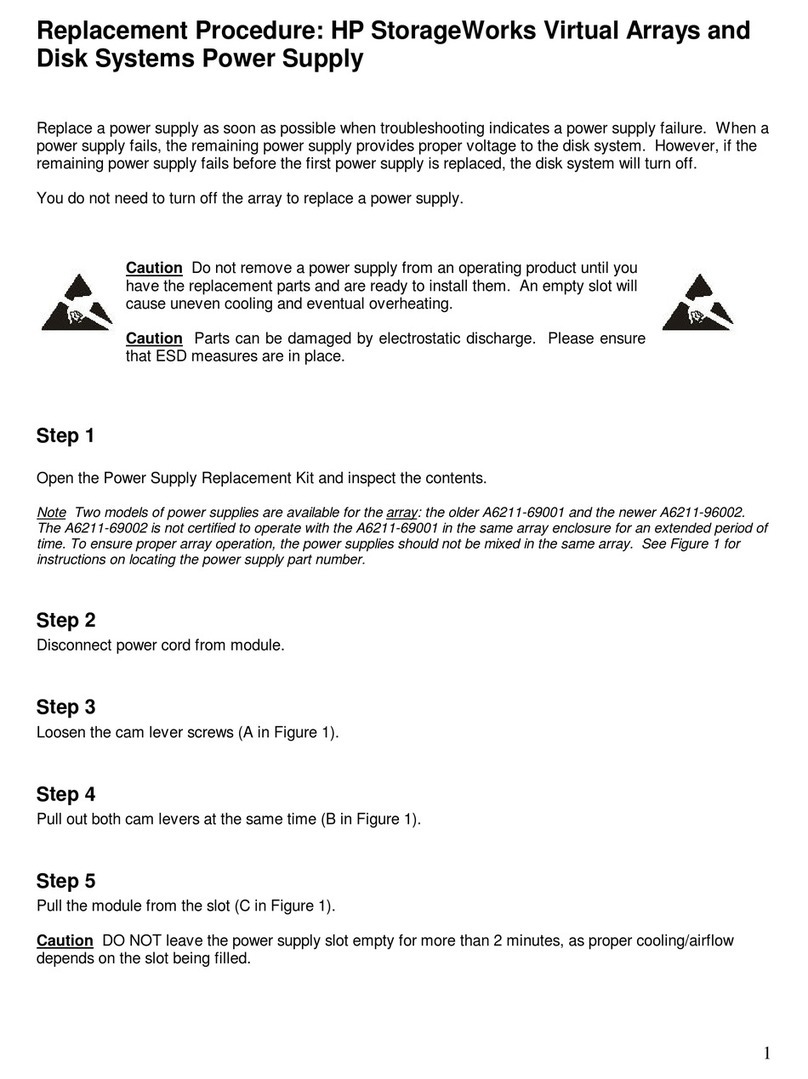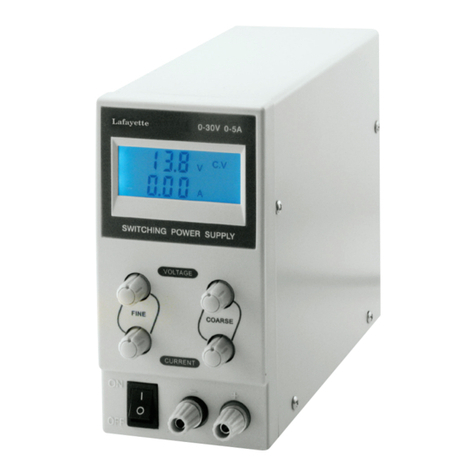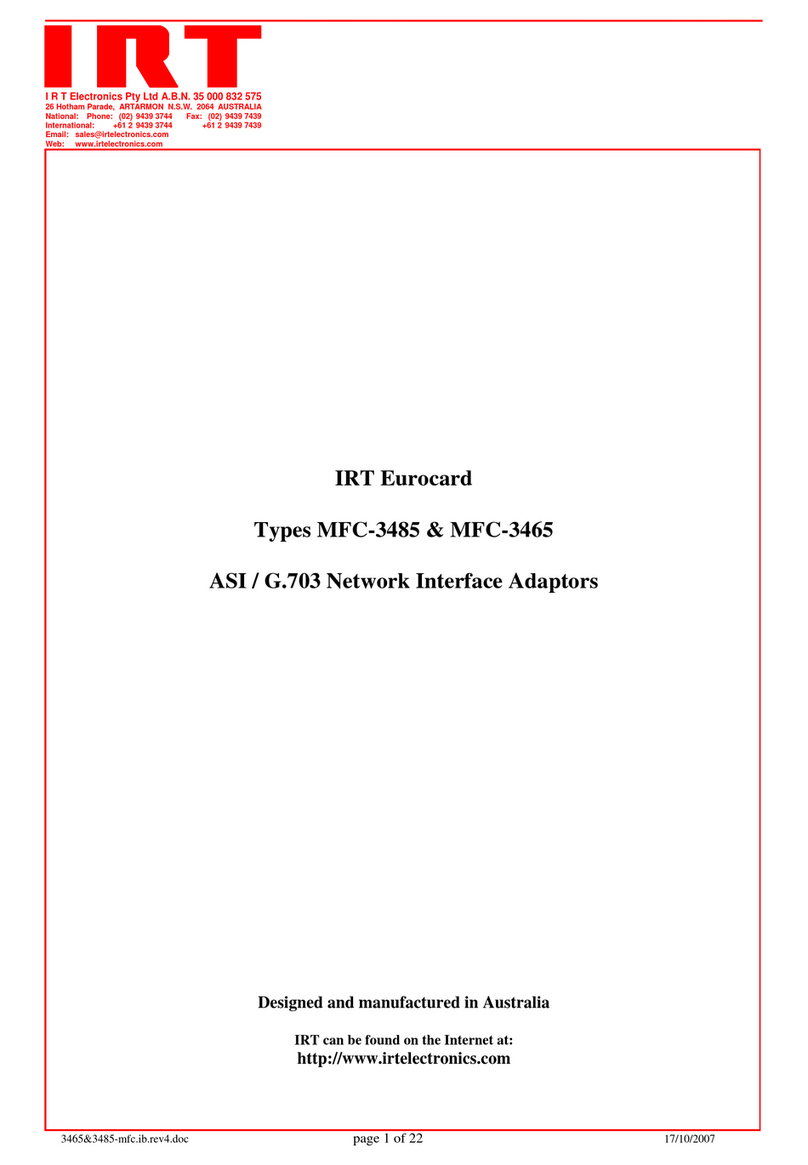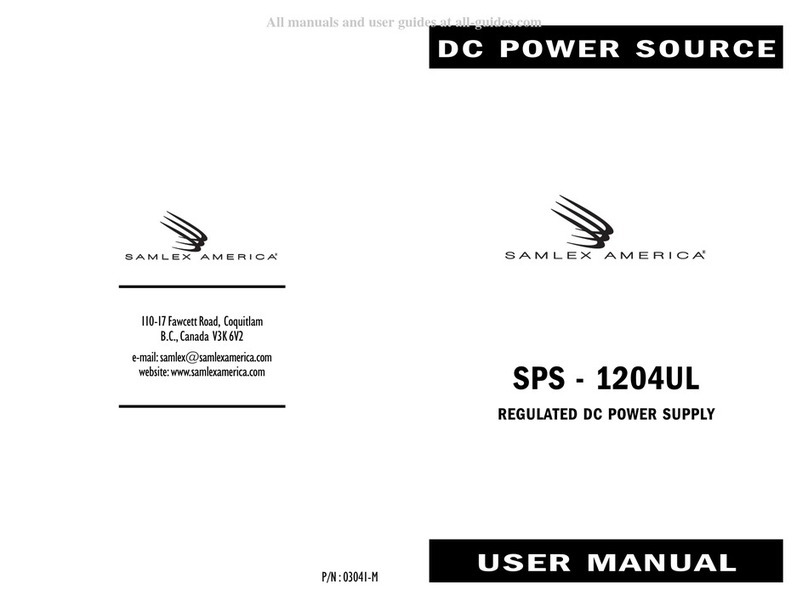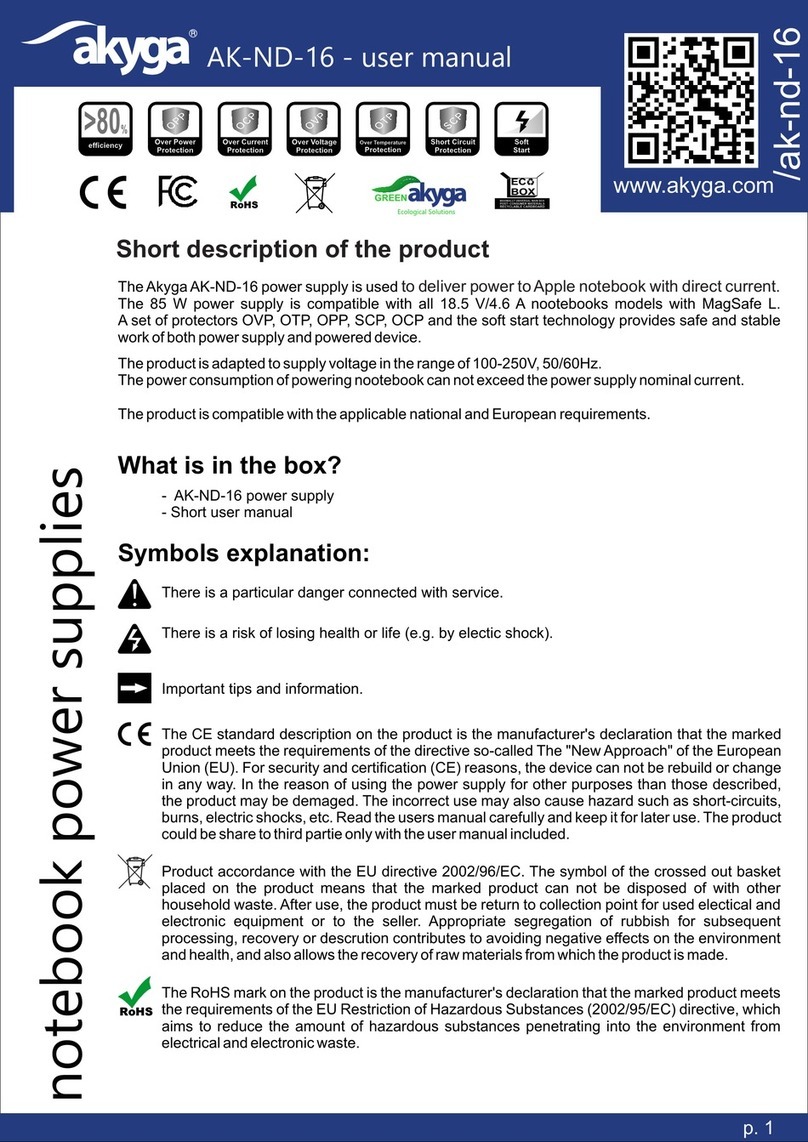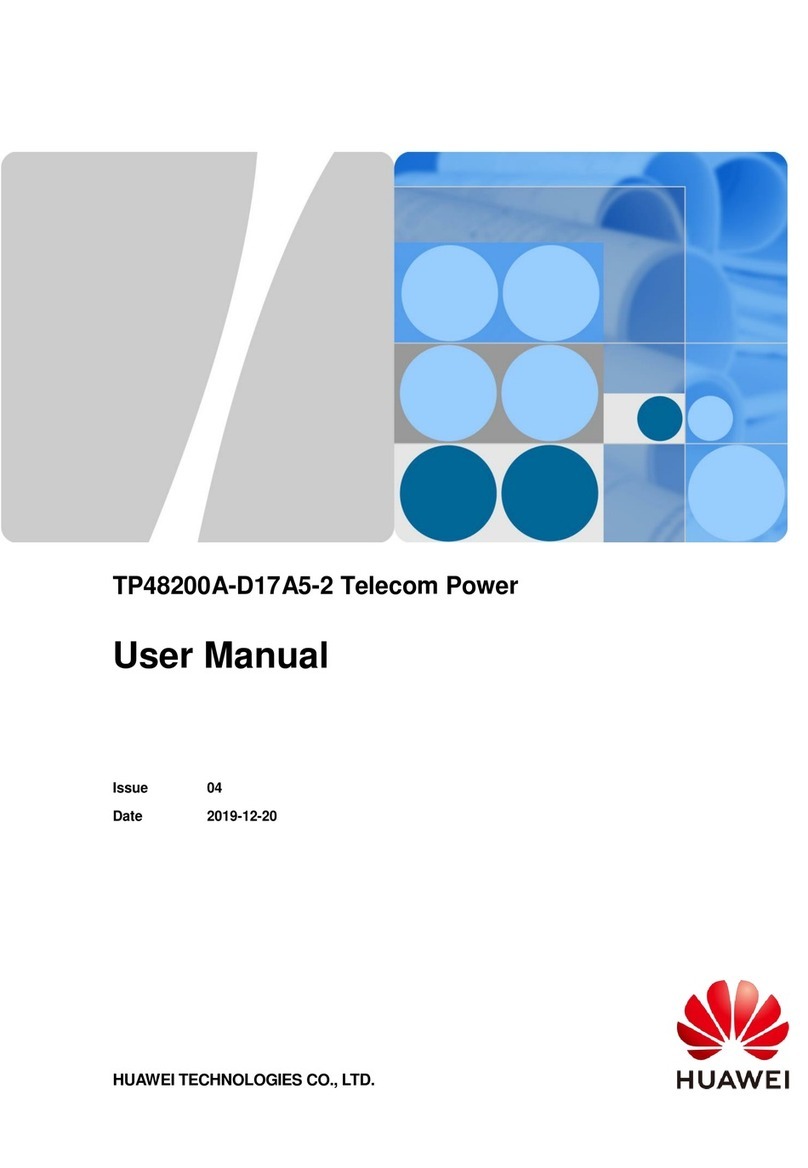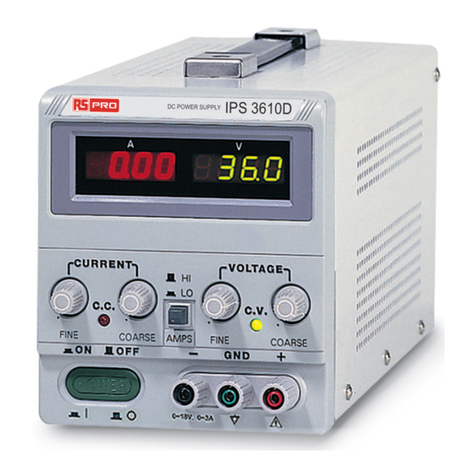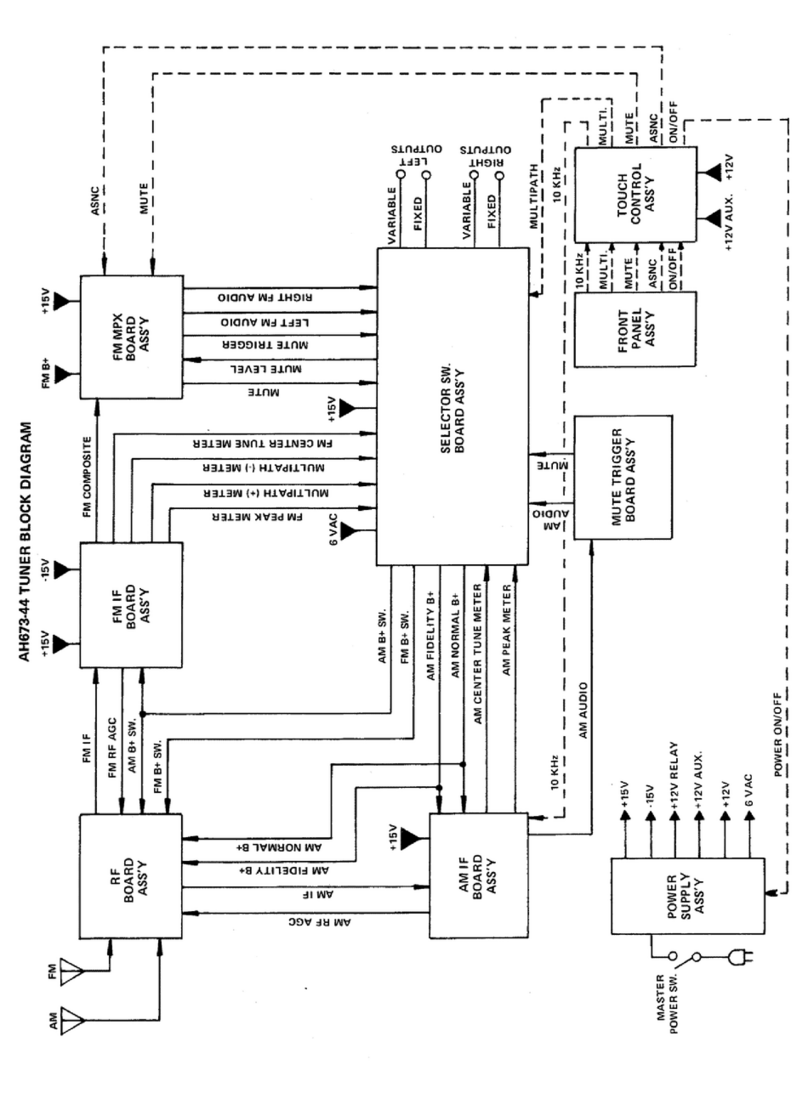Marathon Power Vault HP Series User manual

True On Line,
Double Conversion
Uninterruptible Power Supply
86(50$N8$/ )2502'(/6
6kVA - 10kVA
Vault HP Series


Table of Contents
Section Page
1 .
Introduction ............................................................................................................................. 8
2.
System Description ................................................................................................................. 8
2.1
General Description……………………………………………………………………………..…8
2.2
System Configuration……………………………………………………………………………..10
3.
Safety Information ..................................................................................................................10
4.
Storage ....................................................................................................................................11
5 .
Installation .............................................................................................................................. 11
5.1
Environment ...................................................................................................................... 11
5.2
AC Power and Load Connections ......................................................................................12
5.3
Rear Panel Views .............................................................................................................. ...17
5.3.a
Tower Models - 4k / 5kVA Rear Panel Views……………………………………………17
5.3.b
Tower Models - 6kVA Rear Panel Views ....................................................................18
5.3.c
Tower Models 8k / 10kVA Rear Panel Views ..............................................................18
5.4
Connection to Mains Run and Loads (6000-10000) ..........................................................19
5.5
Factory Default Settings ...................................................................................................... 20
6.
Communication Interface and Alarm Connections ......................................................... .21
6.1
EBP Port.............................................................................................................. ..............21
6.2
6.2 Network Transient Protector (Optional).......................................................................22
6.3 Load Segments (Where applicable)..................................................................................22
7.
Operational Instructions ........................................................................................................ 23
7.1
Starting Up and Shutting Down the UPS. ........................................................................23
7.2
Push-button Operations ...................................................................................................23
7.3
Control Panel Indicators ...................................................................................................24
7.4
LCD Panel Display Modes ................................................................................................25
7.5
Manual UPS or Battery Test ..........................................................................................................26
7.6
Sense Mode – Normal and Generator Waveforms…………………………………………27
7.7
Audible Alarms ..................................................................................................................27
7.8
Troubleshooting ................................................................................................................28
8.
Maintenance ............................................................................................................................ 29
8.1
Battery Replacement .......................................................................................................... 29
9.
Specifications ......................................................................................................................... 32
10.
Warranties ............................................................................................................................34
3

4

EMC Statements
CISPR 22
NOTICE: Pursuant to CISPR 22 rules, this product has been tested and thereby complies with
the conditions of a class C2 (6KVA and 10KVA) and Class A digital device, which have been
established for offering sufficient protection against dangerous interference for installation in a
residential area. Installation and use of the equipment should comply with the instructions
provided in order to avoid such interference due to the amount of radio frequency energy that is
radiated and generated by the equipment. In spite of this, we cannot assure that a certain
amount of interference may not occur in some installations. If, by turning on and off, it can be
deduced that your radio or television reception is found to be influenced by harmful interference
from the equipment, it is recommended to use one of the following preventive measures:
1.
Place the receiving antenna in a separate location or orientation.
2.
Ensure a greater distance is achieved between the receiver and the equipment.
3.
Ensure that your equipment is connected to an outlet on a separate circuit than the receiver.
4.
Contact a technician experienced with radio and TV or a dealer for further assistance.
Declaration of Conformity Request
Units labeled with a CE mark comply with the following standards and directives:
•Harmonic Standards: Low Voltage Directive EN 62040-1 1st / IEC 62040-1 1st and EMC
Directive EN62040-2 1st / IEC 62040-2 1st
•EU Directives: 73 / 23 / EEC, Council Directive on equipment designed for use within
certain voltage limits
2006 / 95 / EC, Amending Directive 93 / 68 / EEC and 73 / 23 / EEC
89 / 336 / EEC, Council Directive relating to electromagnetic compatibility
2004 / 108 / EC, Amending Directive 92 / 31 / EEC and 89 / 336 / EEC relating to EMC
The EC Declaration of Conformity is available upon request for products with a CE mark.
5

IMPORTANT SAFETY INSTRUCTIONS
SAVE THESE INSTRUCTIONS
1.
This manual contains important instructions that should be followed during
Installation and Maintenance of the UPS and Batteries.
2.
CAUTION (UPS with Internal Batteries): Risk of electric shock - Hazardous live parts
inside this unit are energized from the battery supply even when the input AC power is
disconnected.
3.
CAUTION (No User Serviceable Parts): Risk of electric shock, do not remove cover. No user
serviceable parts inside. Refer servicing to qualified service personnel.
4.
CAUTION (Non-isolated Battery Supply): Risk of electric shock, battery circuit is not isolated
from AC input / output; hazardous voltage may exist between battery terminals and
ground. Test before touching.
5.
WARNING (Fuses): To reduce the risk of fire, replace only with the same type and
rating of fuse.
6.
WARNING: Intended for installation in a controlled environment. The maximum
ambient temperature is 40°C.
7.
CAUTION: Do not open or damage the battery, electrolyte may be released which is
harmful to the skin and eyes.
8.
CAUTION: A battery can present a risk of electric shock and high
short circuit current. The following precautions should be taken when working with
batteries:
a.
Remove watches, rings and other jewelry or metal objects.
b.
Use only tools with insulated handles.
c.
Wear rubber gloves and boots.
d.
Do not lay tools or metal parts on top of batteries.
e.
Disconnect charging source prior to connecting or disconnecting battery
terminals.
9.
Do not dispose of batteries in a fire, as they may explode.
10.
To reduce the risk of electric shock, disconnect the UPS from the AC input power supply
before installing a communication interface cable. Reconnect the power cord only
after communication interconnections have been made.
11.
Battery replacement should be performed or supervised by personnel with knowledge of
batteries. Keep unauthorized personnel away from the batteries.
12.
CAUTION: To reduce risk of fire, connect only to a circuit provided values as shown in
table below, maximum branch circuit over current protection in accordance with the
National Electric Code, ANSI/NFPA 70". An AC output disconnect shall be provided by
others. Table 3a for UL models and Table 3b for CE models.
CAUTION: This UPS is not applicable for motors, hair dryers, speakers, and
fluorescent lamps.
6
6

The instructions contained within this safety manual are extremely important and should be closely
followed at all times during installation and follow-up maintenance of the UPS and battery.
For additional safety instructions, please use the Safety Manual as reference.
Symbols
The following symbols warn of precautions and provide directions or instruction regarding the unit:
RISK OF ELECTRIC SHOCK
-
Indicates that there is a risk of electric shock.
CAUTION: REFER TO OPERATOR'S MANUAL
-
Indicates that the operator's manual
should be referred to for additional information, such as operating and maintenance
instructions.
SAFE GROUNDING TERMINAL - Indicates primary safe ground.
LOAD ON/OFF
-
Indicates that the associated push-button turns the unit and its output
on or off.
RJ-45 CONNECTOR
-
Indicates that this connector provides network interface
connections and that telephone or telecommunications equipment should NOT be
plugged into it.
DISPOSAL
-
Indicates that the UPS and its batteries should be disposed of in the
correct manner since the batteries are of the lead-acid type. It is recommended that the
batteries be recycled.
CAUTION
The unit contains dangerous voltage levels. If the UPS is on, but not connected to an
AC power supply, the unit's outlets may still be energized with voltage due to the
presence of an internal power source, i.e. the battery.
The unit should be installed indoors in an area free of electrically-conductive
contaminants.
The unit should be installed in a temperature and humidity controlled environment in
order to reduce the risk of electric shock.
Only the power cord that is supplied with the unit should be used to connect it to the
AC power supply. The equipment should also be located as close as possible to the
AC supply.
Replacing and maintenance should only be carried out by qualified service personnel
with the exception of battery replacement.
Before carrying out battery or fuse replacement or shipping the unit, first ensure that
the unit is turned off completely and all cables are disconnected.
7

,QWURGXFWLRQ
6\VWHP'HVFULSWLRQ
The information provided in this manual covers single phase 6000 – 10000 VA, uninterruptible
power systems, their basic functions, operating procedures, and emergency situations, also
including information on how to ship, store, handle and install the equipment. Only detailed
requirements of the UPS units are described herein, and installation must be carried out in
accordance with this manual. Electrical installations must also carefully follow local legislation
and regulations. Only qualified personnel should conduct these installations as failure to
acknowledge electrical hazards could prove to be fatal.
Several different kinds of sensitive electrical equipment stay protected by a UPS (Uninterruptible
Power System) including computers, workstations, process control systems, telecommunications
systems, sales terminals, other critical instrumentation, etc. The purpose of the UPS is to protect
these systems from poor quality utility power, complete loss of power, or other associated
problems.
Electrical interference abounds in many forms causing problems in AC power, from lightning,
power company accidents and radio transmissions to motors, air conditioners, and vending
machines, among others. So protection of sensitive electrical equipment is vital to protect
against power outages, low or high voltage, slow voltage fluctuations, frequency variations,
differential and common-mode noises, transients, etc.
In order to prevent power line problems reaching critical systems causing damage to software,
hardware and causing equipment to malfunction, the UPS helps by maintaining constant voltage,
isolating critical load output if needed, and cleaning the utility AC power.
2.1 General Description
As a double conversion on-line UPS, it is able to supply uninterrupted, clean single-phase power
to your critical systems while keeping batteries charged continuously, regardless of whether
utility power fails or not.
In event that a power failure lasts longer than a UPS backup time, it will shut down avoiding
battery discharge, and as soon as voltage comes back, the UPS will automatically charge up
and start recharging the batteries. As shown in Fig.1 block diagram:
An input filter reduces transients on the mains
For maintaining full battery charge, AC-power is rectified and regulated in the rectifier feeding
power to the inverter and battery converter.
DC power is converted to AC in the inverter passing it on to the load.
Power is maintained from the battery during a power failure.
The converter increases voltage appropriately for the inverter.
8

Efficiency Optimizer Function
The Efficiency Optimizer function is a new feature for the UPS adding cost
effectiveness, minimizing power loss and reducing power consumption. Alternating
between bypass and on-line modes is achieved automatically and in accordance with
the conditions of the utility power. On-line mode may be used during times of
intermittent power supply, and bypass mode when power flows smoothly in order to
obtain greatest efficiency. Irregularities can be detected in less than a second, and on-
line mode reactivated immediately. Switching back to online mode occurs when input
voltage is outside ±10% or nominal (±15% selectable), when input frequency is outside
of ±3Hz or when no input line is available. Although high efficiency is standard, the
default operation is in on-line mode. Bypass can be activated in the LCD panel, though
on-line can be run permanently if preferred.
Free Run Mode
The UPS operates in free run mode when input frequency is outside of the selected
input frequency range. Free run mode is when output frequency does not match input
frequency. When starting the UPS, the frequency regulation detected is 50 or 60 Hz
±0.25Hz. Please refer to chapter 7.2 if you want bypass available while running in free
run mode.
Diagnostic Tests
When you start the UPS, a diagnostic test is automatically executed that checks
electronics, battery, and reports any problems on the LCD display. An advanced battery
management system always monitors the conditions of the batteries sends any
forewarnings if replacement is needed. Otherwise every 30 days of normal mode
operation, a battery discharge test is performed and any problems reported on the LCD
display. Except during the first 24 hours after startup while the UPS is in charging mode
(please see chapter 7.2), diagnostic tests can be performed manually from the front
panel at any time.
9

2.2 System Configuration
The UPS device and the internal backup battery make up the system. Depending on the site
and load requirements of the installation, certain additional options are available as a tailored
solution. Planning a UPS system, the following should be taken into consideration:
The total demand of the protected system shall dictate the output power rating (VA). Allow a
margin for future expansion or calculation inaccuracies from measuring power
requirements.
Backup time needed will indicate the battery size needed. If load is less than the UPS
nominal power rating then actual backup time is longer.
The following options are available:
External Battery Cabinets
Transformer cabinets
Maintenance bypass switches
Connectivity options (relay card, SNMP/WEB card)
The following UPS models are available
Model Backup time with internal
batteries
Recharge time to 90%
capacity
6000VA 4~6min 4 hours
10000VA 3~5min 4 hours
Note the battery backup times are approximate and could vary depending on battery life and
temperature configuration.
Additional External Battery Cabinets are available if more back-up time is needed.
3. Safety information
Information presented here is vital to all personnel and please also read the UPS safety manual.
Storage and Transportation
Please handle with extreme caution since a high amount of energy is contained with the batteries.
Always keep the unit in position as marked on the packaging and never drop the unit.
Installation
If flammable substances such as gases or fumes are present or if the room is airtight, a safety
hazard situation exists, in which no electrical equipment should be operated. The instructions in
this manual explain how to install the UPS safely. Not acknowledging such electrical hazards may
be fatal, so keep this manual for all future reference.
Warning
It is strongly advisable not to open the UPS cabinet as the components have very
high voltage and touching them may be fatal. Only a technician from the
manufacturer or an authorized agent may service the unit. This UPS unit’s output
receptacles carry live voltage even when not connected to a power supply as it has
its own energy source.
10

User’s operations - The only operations that users are permitted to do are:
• Turning the UPS unit on and off
• Operating the users interface
• Connecting data interface cables
All such operations are to be performed exactly as instructed in this manual. The greatest care
possible must be taken for any of these operations and any change thereof may prove very
hazardous to the operator.
4. Storage
Please adhere to the following instructions if the UPS is not installed immediately:
Store the equipment as is in its original packing and shipping carton
Do not store in temperatures outside the range of +15°C to +25°C.
Ensure that the equipment is fully protected from wet or damp areas and from moist air.
In order to maintain the vitality of the batteries, ensure that the UPS is recharged every 6
months for at least 8 hours.
Ensure that all environmental requirements are met, otherwise the safety of installation
personnel and users cannot be guaranteed. In addition, the unit may sustain damage
or malfunction.
5. Installation
5.1
Environment
Please adhere to the following environmental instructions when locating the UPS and EBP's:
1.
Avoid temperature and humidity extremes. The optimum operating temperature range is
between 59°F and 77°F (+15°C and +25°C).
2.
Provide protection against moisture or avoid altogether if possible.
3 .
Ensure there is at least 12 inches (300mm) behind and 12 inches (300mm) on each side of
the UPS for ventilation.
4.
Ensure that the front of the UPS remains unobstructed for access to the control panel and
LCD display.
5.
External Battery Packs must be installed next to or under the UPS.
Caution! The UPS and the External Battery Pack are to be installed at the same location. In
case, the UPS and the External Battery Pack are installed outside of visible distance, then
subject to the local inspection authority, User will need to add a Safety disconnect adjacent to
the UPS to provide safety isolation.
11

1.
Ensure that the UPS is disconnected from the AC supply when connecting External Battery
Packs.
2.
Use the battery cable that is supplied with the External Battery Pack when connecting it to the
UPS. Connect the second battery cabinet to the first and so forth, assuming more than one is
to be used.
3.
Take note of UPS parameters when adding external battery packs and adjust accordingly
(see Ch. 7).
4.
Connect the input cable to the UPS and connect the other end to a grounded AC power
supply. The batteries will automatically begin to charge. Please note that while the UPS may
be used immediately, maximum back-up time may not be available until the batteries have
been charged for a minimum of 8 hours. See Table 1 for input circuit breaker rating and
conductor size.
5.
If the unit displays "Site Wiring Fault", have the wiring fault corrected or alternately, disable the
related alarm on the UPS.
6.
After initial charging is complete, connect the loads to the UPS.
7.
Do not connect any load that may overload the UPS such as equipment containing AC electric
motors or loads that have a high inrush current.
8.
Make computer and/or alarm interface connections according to Chapter 6 of this user manual
and that provided with the interface option. These connections are made on the rear panel.
9.
Installation is now complete.
Table 2
5.2
AC Power and Load Connections
Vertical and Wall-Mount Installation
Only qualified technicians should carry out installation of this equipment. The installation must
further comply with all local legislation and regulations.
Follow all installation and safety instructions very carefully to avoid the existence of a hazardous
situation and damage to the UPS and/or loads.
The high voltage and current contained within this equipment can injure or be fatal
to personnel and can damage associated equipment.
Various input (and sometimes output) cables are supplied with all models:
Power for UPS Circuit Breaker Wiring AWG or mm2
6000VA 40A 10 AWG or 5.5mm2
10000VA 60A 8 AWG or 8 mm2
12

Additional Installation Information (for 6kVA - 10kVA Models)
1. Ensure that all electrical connections have been correctly implemented for the installation site out.
2. Refer to Table 2 for input and output breaker rating.
3. Isolate and prevent the source from activating. Both input and output circuit breakers (located on the
rear of the unit) must be in the "OFF" position.
4. Refer to figure 2 for single cable input connection and figure 3 for dual cable input connection. If
installing dual cables, the interconnection jumper (J) shown in figure 2 needs to be removed.
5. If during installation, it cannot be determined that the neutral is grounded or identification of the
status of the neutral in the AC supply is unreliable, an additional two pole disconnect device may be
necessary in the for the installation.
6. Should the optional Emergency Power Off (EPO) circuit on the rear on the unit be used, the output
of the UPS will shut down immediately.
Note: Local safety requirements may require a separate external Emergency Power Off that opens
output circuit breakers. Refer to local wiring regulations.
Table 3a
UPS Model Input Breaker Rating Output Breaker Rating
6kVA 2P, 250Vac, 40A 2P, 250Vac, 40A
10kVA 2P, 250Vac, 60A 2P, 250Vac, 60A
Fig. 2
13

Installation Appendix
Installing the input /output terminals with covers on UPS Module. Screws: M3x8
Step1: Separate the top cover
Step 2: Fix the bottom cover on the terminal block.
Step 3: Input configure. Insert the input cable.
Step 4: Output configure. Insert the output cable.
Step 5: Fix the top cover.
14

Connecting the UPS to the Battery
15

6WDFN,QVWDOODWLRQ
Unit Stack Installation
The following diagrams illustrate how to stack the units (and battery packs when applicable).
16

5.3 Rear Panel Views
1. 6000VA Tower Rear Panel
2. 6000VA RT Rear Panel
17

3. 10000VA Tower Rear Panel
4. 10000VA RT Rear Panel
18

5.4 Connection to Mains and Loads (6000 - 10000VA)
Only qualified specialists or technicians who conform to applicable safety standards may carry out
the installation of this equipment. The installation must further comply with all local legislation and
regulations.
Follow all installation and safety instructions very carefully, otherwise those performing installation
may suffer from a hazardous situation and the UPS or load connections may also be damaged.
CAUTION:
This UPS is not applicable for motors, hair dryers, speakers, and fluorescent lamps.
The high voltage and current contained within the UPS equipment can injure or kill personnel and
damage equipment.
For electrical installation, closely observe the nominal current rating of the source.
Installing External Battery Cabinets
First disconnect the UPS from mains and loads before attempting an External Battery Cabinet
installation.
•Use the battery cable provided with the External Battery Cabinet to connect the External Battery
Cabinet to the UPS. Connect a second battery cabinet to the first one with the cable provided if
more than one is to be installed.
•Be aware of UPS parameters and changing the Battery pack quantity when using the external
battery cabinets (see chapter 7.2)
Installing UPS
•Ensure that the installation site has all electrical connections properly carried out. In addition, refer
to figures 2 to 4 to check the fuse and cable dimensions.
•Isolate and secure the source against re-closing. Both input and output circuit breakers (located in
the back) must be “OFF”.
•Refer to figure 2 to 4 for single cable input and figure 2 to 4 for dual cable input. Connect the UPS
according to these diagrams. If installing dual cables, the interconnection jumper (b*) needs to be
removed as in figure 2 to 4. Fuse and cable sizes are given in figure 2 to 4.
•During installation, if it cannot be determined that neutral is grounded or the\ identification of the
neutral status of the mains supply is unreliable, an additional two pole disconnect device is
necessary in the building installation.
•At the back of the unit you will find the Emergency Power Off (EPO), which when open will
immediately shut down the logic circuit output of the UPS as in figure 2 to 4. Wiring the EPO signal
is optional.
19

Caution! Local safety requirements may require a separate external Emergency Power Off that opens
output circuit breakers, and if so, use figures 2 to 4 for proper installation. Refer to local wiring rules.
•Should computer or alarm connections be used, use connections according to chapter 6 of the
manual provided with that option. The connections can be referred to on the rear panel.
•The installation is now complete.
Power for UPS Circuit Breaker Wiring AWG or mm2
6000VA 40A 10 AWG or 5.5mm2
10000VA 60A 8 AWG or 8 mm2
Fig. 2
5.5 Default Settings at the Factory
On the LCD display you will find several of the UPS parameters to select. Default settings are
as follows:
Settings Selection Factory default
Output Voltage Setting 208/220/230/240 Vac 230V (FOR HV
series)
Input/Bypass Voltage
±10%
+10/-15%
+15/-20%
+10/-15%
Input/Frequency
±2%
±5%
±7%
±5%
HE Mode Setting On/Off Off
Free Run Mode On/Off On
Bypass Enable/Disable at free run
mode Disable/Enable Disable
Alarm silence On/Off Off
Site wiring alarm Enable/Disable Disable
External Battery pack setting 0, 1, 2 0
You may change default settings, but we recommend that this is done after installation and
before starting up loads. Read UPS configurations in chapter 7.2 for more information.
20
This manual suits for next models
4
Table of contents

